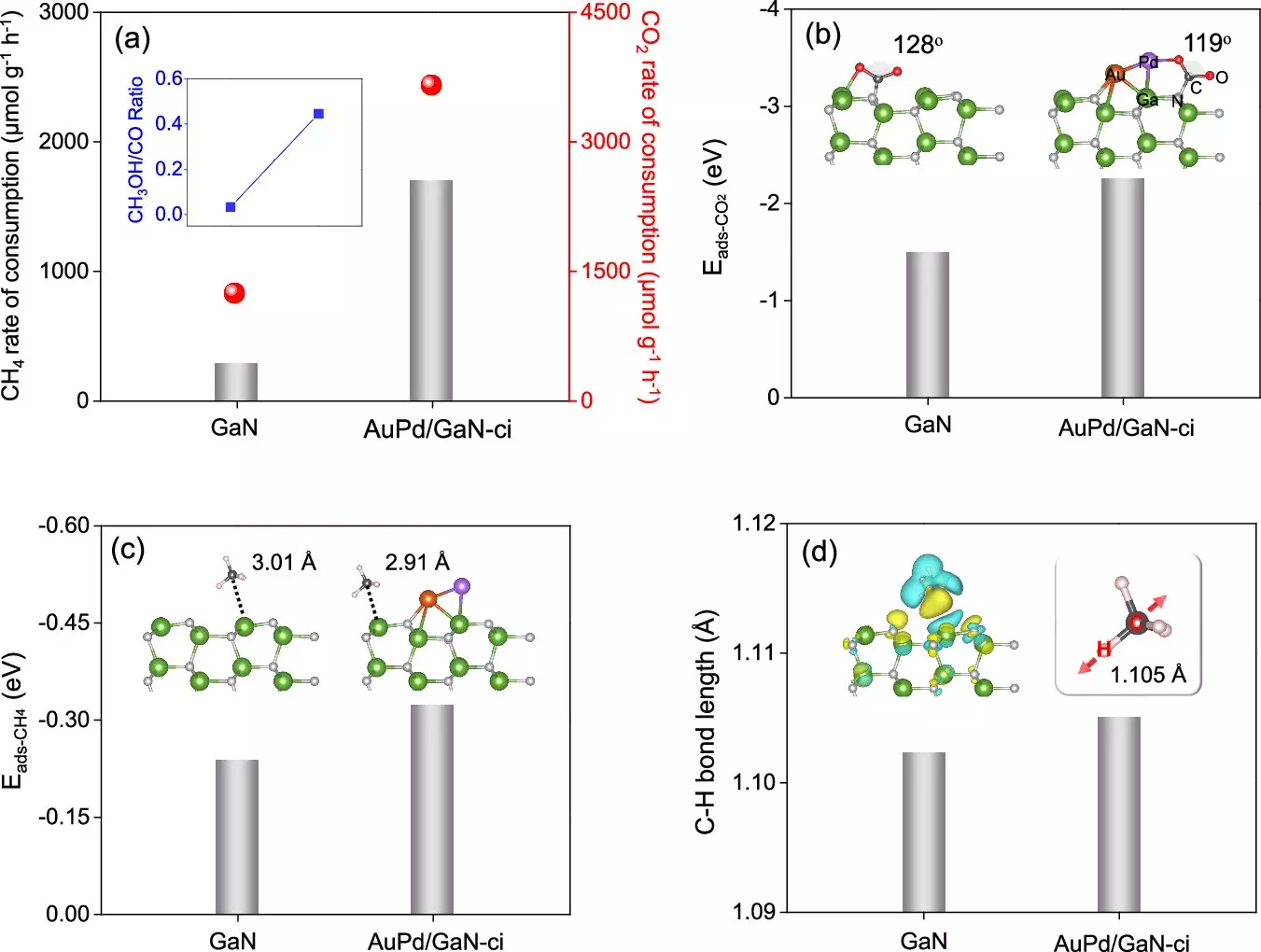In a significant breakthrough, researchers at McGill University have unveiled a method that utilizes solar energy to convert two notorious greenhouse gases—methane and carbon dioxide—into valuable chemical products. This innovative approach not only holds potential for mitigating climate change but also promises to revolutionize the industrial production of essential materials. The implications of this research are vast, hinting at a future where harmful emissions can be transformed into beneficial resources.
The exciting aspect of this research lies in the light-driven chemical reaction developed by the McGill team. By employing a catalyst composed of gold, palladium, and gallium nitride, the researchers managed to initiate a unique process where sunlight triggers the conversion of carbon dioxide and methane into green methanol and carbon monoxide. The simplicity and efficiency of this reaction, which occurs at room temperature, distinguishes it from traditional chemical processes that often require elevated temperatures and toxic catalysts.
This process mimics natural photosynthesis, a phenomenon where plants transform sunlight, carbon dioxide, and water into glucose and oxygen. Here, the technique mirrors this organic blueprint, demonstrating a striking ability to repurpose waste gases into usable products. Green methanol, in particular, is gaining momentum in the energy sector as a clean fuel alternative.
The ability to recycle greenhouse gases presents a dual benefit: it represents a significant reduction in harmful emissions while simultaneously creating economically valuable chemicals. According to co-first author Hui Su, the prospect of converting emissions from vehicles and industries into green fuel is not merely hypothetical; it is a tangible step towards achieving sustainability.
Such innovations are crucial in the context of global climate goals. Canada’s ambition for net-zero emissions by 2050 necessitates breakthroughs that not only reduce emissions but also create pathways for sustainable development. The researchers believe their process aligns seamlessly with these objectives, merging environmental responsibility with industrial need.
While the breakthrough is promising, there remain hurdles to overcome before large-scale implementation can occur. Researchers will need to refine the technology to ensure its efficacy and efficiency in diverse settings. Furthermore, scaling this process to meet industrial demands will require collaborative efforts among chemists, engineers, and policymakers.
Nonetheless, this innovative approach stands as a beacon of hope in the ongoing battle against climate change. If successfully adapted, it could catalyze a systemic shift towards sustainability, fundamentally changing how industries interact with the environment.
The McGill University’s research not only provides a promising avenue for producing cleaner fuels and essential chemicals but also serves as a reminder of nature’s blueprint that can be emulated for human advancement. By harnessing the abundant energy of sunlight, this breakthrough illustrates the potential to transform an environmental crisis into an opportunity, paving the way toward a more sustainable and economically resilient future. The development marks a critical juncture in innovative chemistry, with the potential to reshape the landscape of how humanity addresses greenhouse gas emissions.

